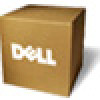Dell B3460dn Mono Laser Printer User's Guide - Page 41
Tips on using envelopes, Make sure the Paper Type is Card Stock. - best laser printer
 |
View all Dell B3460dn Mono Laser Printer manuals
Add to My Manuals
Save this manual to your list of manuals |
Page 41 highlights
Paper and specialty media guide 41 When printing on card stock: • Make sure the Paper Type is Card Stock. • Select the appropriate Paper Texture setting. • Be aware that preprinting, perforation, and creasing may significantly affect the print quality and cause jams or other paper handling problems. • Check with the manufacturer or vendor to ensure that the card stock can withstand temperatures up to 240°C (464°F) without releasing hazardous emissions. • Do not use preprinted card stock manufactured with chemicals that may contaminate the printer. Preprinting introduces semi‑liquid and volatile components into the printer. • Use grain short card stock when possible. Tips on using envelopes Print samples on the envelopes being considered for use before buying large quantities. • Use envelopes designed specifically for laser printers. Check with the manufacturer or vendor to ensure that the envelopes can withstand temperatures up to 230°C (446°F) without sealing, wrinkling, curling excessively, or releasing hazardous emissions. • For best performance, use envelopes made from 90‑g/m2 (24‑lb bond) paper or 25% cotton. All‑cotton envelopes must not exceed 70‑g/m2 (20‑lb bond) weight. • Use only new envelopes from undamaged packages. • To optimize performance and minimize jams, do not use envelopes that: - Have excessive curl or twist - Are stuck together or damaged in any way - Have windows, holes, perforations, cutouts, or embossing - Have metal clasps, string ties, or folding bars - Have an interlocking design - Have postage stamps attached - Have any exposed adhesive when the flap is in the sealed or closed position - Have bent corners - Have rough, cockle, or laid finishes • Adjust the width guides to fit the width of the envelopes. Note: A combination of high humidity (over 60%) and high printing temperature may wrinkle or seal envelopes. Tips on using labels Print samples on the labels being considered for use before buying large quantities. Note: Use only paper label sheets. Vinyl, pharmacy, and two‑sided labels are not supported.















